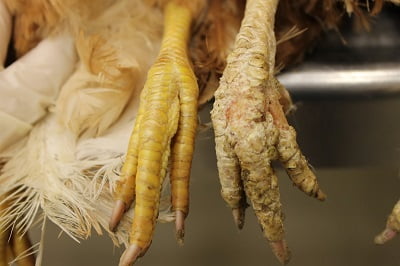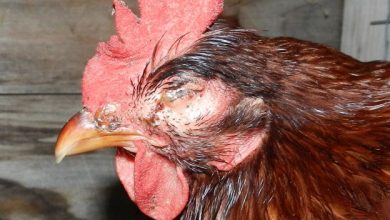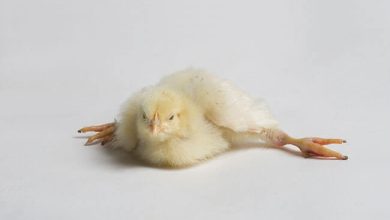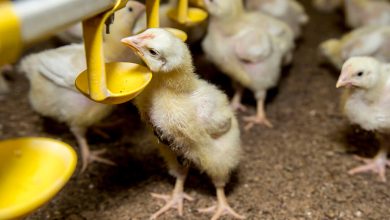Common poultry parasites and their management

Introduction poultry parasites
Poultry refers to a group of domesticated birds kept for food specially meat, eggs, fiber, entertainment or work (messenger pigeons). This comprises poultry such as hens, turkeys, ducks, geese, pigeons, quail (Japanese or Bobwhite), ostriches, and emus. Birds can be infected externally and internally with parasite which will lead to economic losses and reduced GDP.
External poultry parasites
Numerous external parasites that feed on chickens but do not reside on them are bloodsuckers. After eating, they depart the host and take refuge in the walls and floors of the nearby homes. Bed bugs, poultry mites, and avian ticks are the three most prevalent. They are all nocturnal feeders and are all regarded as scarce. Because they only eat at night, it could be difficult to find an infestation unless the birds are looked at them. All of the parasites are slow moving, making it simple to see them on birds and, if required, collect them for identification. Mites and ticks are also included under this category. Blue bugs are another name for fowl ticks. They are categorised as soft ticks and differ greatly from hard ticks, which are often seen on cats and dogs. Fowl ticks have wrinkled skin and range in colour from pale reddish brown to dark brown. The duration from egg to adult, under ideal circumstances, is around 30 days. In 30 to 45 minutes, adult ticks totally gorge themselves on hosts. Adults have a high tolerance for hunger and may go more than a year without a blood meal. Chicken mites Chicken mites are also known as red mites or roost mites. They are often confused with the northern fowl mite. Chicken mites are quite small, but they can be seen with the naked eye. They are typically found in large numbers. The life cycle is fairly complicated, with a series of feeding and non-feeding immature stages. Eggs hatch in about three days, and under favourable conditions the life cycle can be completed in seven to ten days.
The bed bug (Cimex lectularius) is normally widespread. Immatures are off-white in colour, whilst adults are reddish brown in colour. The females use the gaps and crevices they live in to deposit eggs in groups of 15 to 60. Between 150 and 600 eggs are deposited by females over their lifespan. Usually, it takes 1 to 4 months for an egg to develop into an adult, while it is possible for it to take considerably longer. Nymphal stages may endure prolonged fasting for 1 to 5 months while still surviving. Adults feast themselves on hosts for five to ten minutes.
Internal poultry parasites
Coccidia are single-celled protozoa that harm the small intestine’s lining. Since they are host-specific, they do not impact sheep in the same way that they do not affect cattle, swine, or poultry. Blackhead is another single-celled parasite of poultry, The cecal wall of the sick bird is frequently affected by Histomonas melegridis. Chickens can carry it without suffering any consequences, but turkeys are extremely vulnerable. Chickens in backyard poultry flocks frequently have intestinal parasites (worms). The presence of a few parasites rarely poses a threat. Large populations, however, can have a terrible impact on development, egg production, and general health. One element that significantly influences the severity of the infection is the quantity of parasite eggs present in the chicken’s surroundings. By consuming tainted food, water, or litter, or by eating intermediary hosts like snails, earthworms, or other insects that can transport the parasite eggs, the hens can acquire the parasite eggs directly. Large roundworms (Ascaridia galli) are thought to cause the greatest harm of all intestinal worms. More delicately impacted are young birds. Often, a minor illness goes unnoticed. However, a large population of worms hinders the creation of food by preventing it from being absorbed. In severe cases, the worms may actually clog the digestive tract, which results in death. Birds with the condition are wasteful and more prone to other illnesses. By consuming grasshoppers or earthworms that are harbouring the parasite, or by directly ingesting the parasite egg in fecal-contaminated diet, water, or litter, roundworms can be transmitted from one bird to another. The cecal worm is a different worm frequently discovered in chickens (Heterakis gallinarum). Although it seldom creates issues for chickens, its main economic significance comes from its function as a carrier of the bacteria Histomonas melegridis, which causes the lethal illness blackhead in turkeys. The histomonad organism from the chicken litter is ingested by earthworms together with the egg of the cecal worm. The turkeys become afflicted after consuming the earthworms. Turkeys may also consume the histomonad organism directly from the cecal worm egg. By consuming parasite eggs or other vectors harbouring the parasite, such as earthworms, insects, or other small roundworms, small roundworms can be transmitted directly from bird to bird. In contrast to other worms, tapeworms must be transmitted through a middle host, such as a snail, slug, earthworm, beetle, or fly. The right management of nutrition, cleanliness, and treatment are necessary to prevent and control worm infections in backyard chicken flocks. Chickens require a balanced diet, with a focus on getting enough vitamins A and B. It has been demonstrated that a lack of these increases a person’s vulnerability to parasitism.
Management of parasitic disease in poultry
Damage caused by all three of these temporary external and internal parasites is similar. Following points should be considered for management of poultry parasitic disease.
- These parasites have almost completely disappeared from commercial flocks thanks to changes in chicken housing. In tiny flocks of chickens, other poultry, or exotic birds like parakeets and cockatiels, they do occasionally turn up, though. Finding insecticides with labels designed particularly for their management might be challenging because these pests are uncommon.
- Pyrethroid pesticides can be used to treat the poultry house. Cracks and crevices, where these pests shelter, should be eliminated, minimized, or sealed.
- Screens and other obstacles should be used to block the entry of rats and wild birds. Cleaning and disinfecting the poultry coop thoroughly is a necessary part of the treatment for these parasites.
- Thorough removal of litter between flocks of chickens.
- Keep litter as dry as possible.
- Avoid overcrowding.
- Keep wild birds, pigeons and other birds away from chickens.
- They may be infected and shedding the worm eggs.
- Provide adequate drainage of ranges and move shelters frequently to decrease accumulation of droppings.
- Keep birds away from recently ploughed land where earthworms and other insects are more likely to be consumed.
- Use insecticides to control arthropods vectors.
- By lowering parasite levels in severely infected birds, treatment of chickens to reduce intestinal parasites can be advantageous to the producer. As a result, there will be less accumulation of parasite eggs in the environment. Specific treatments are needed for certain worm infestations.
- A determination of which worms are affecting your chickens should be made by your veterinarian prior to treatment.
- Proper use of medication in combination with sound management and sanitation practices should limit production losses from intestinal worms.
- Before starting any flock, make sure you have a plan for how to handle the resulting manure. Try thinking of it as an opportunity more than a waste product that has to be taken care of.
- The most efficient method of handling poultry litter is to directly apply it to fields as it is being removed from the house. This reduces labour, expense and potential environmental problems. This requires clean out when weather and crop conditions are favourable for applying litter.
- Feeding guides: Distinct types of fowl have different nutritional needs. The most common way to describe the needs is in terms of a dietary concentration. The amount of energy in the food affects the percentage of each nutrient in the diet. Due to the fact that birds will consume less of a high energy meal yet must be able to acquire the full daily need of each nutrient, diets that are high in energy also need higher concentrations of the various nutrients (referred to as nutrient-dense diets). Low-energy diets require lower concentrations of the various nutrients since birds will consume more of the meal and so obtain the full quantity of the nutrients they require daily.
- The rotating use of coccidiostatics with forages is the technique that is used the most frequently. Coccidiosis is prevented with commercial vaccines in flocks of broiler producers.
- The hens develop immunity to the appropriate parasite species if they are exposed to the natural action of a modest quantity of oocysts in their environment.
- In cases of substantial invasion, the ascarids can totally obstruct the intestinal lumen. To achieve the therapy and management, regular pathoanatomical and copro-ovoscopic exams, as well as the use of therapeutic and protective dehelminthizations, are employed.




